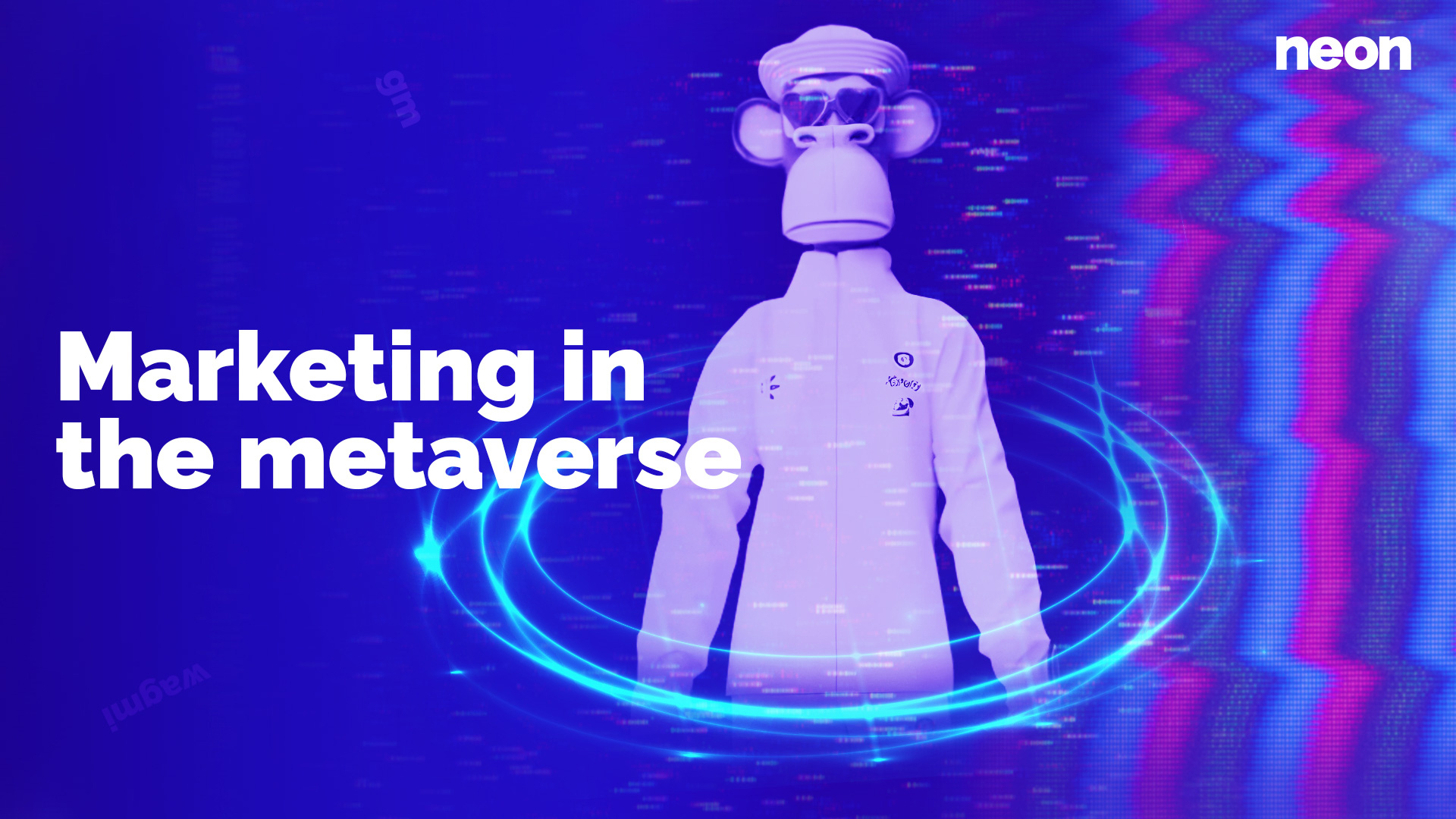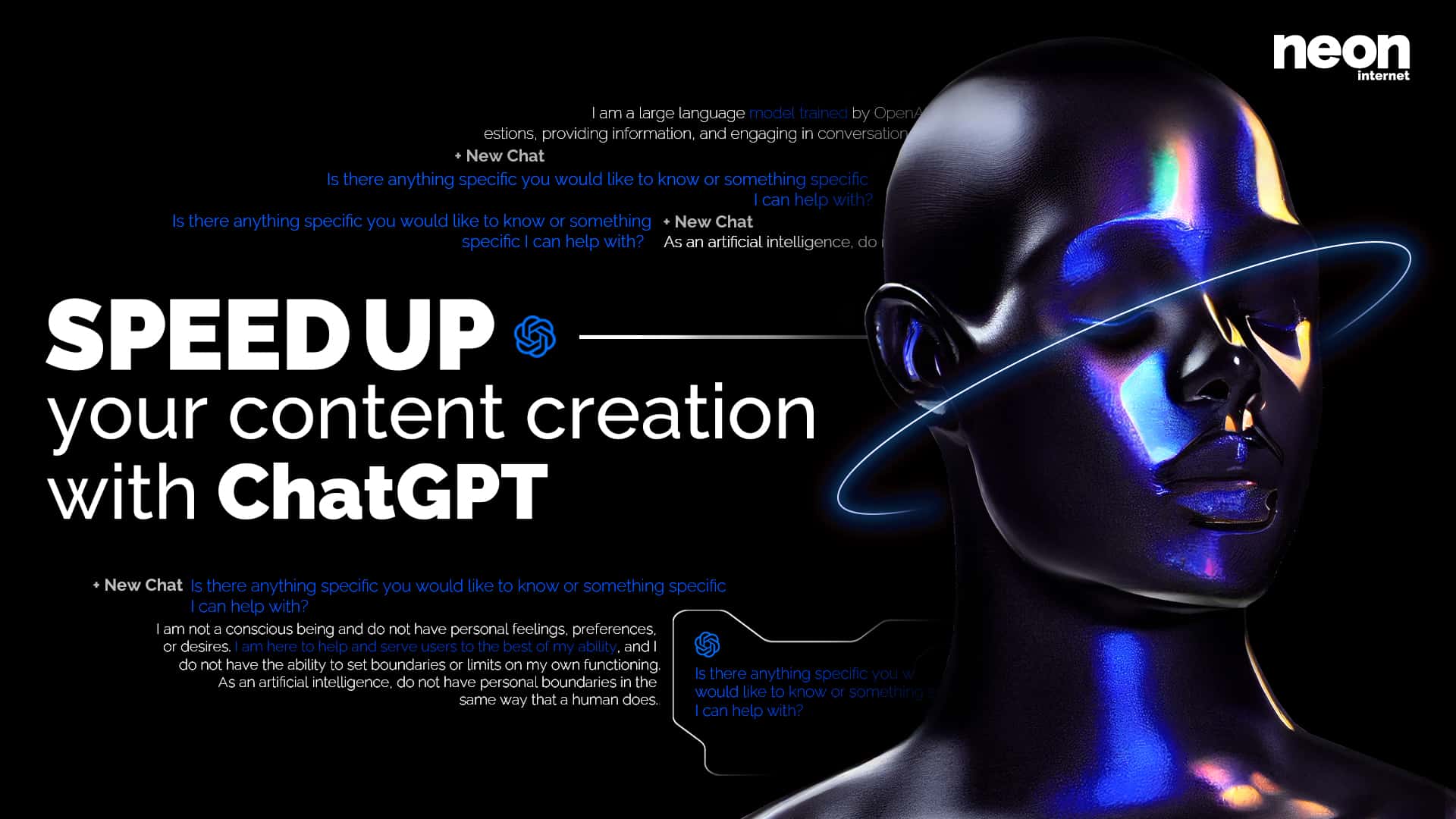Back in the day, people read their newspapers to see what was happening in the local area. People consumed what the print media outlets provided them with. Choices were limited.
All of a sudden, the Internet and Social Media became mainstream. We could finally choose what we wanted to consume and today, social media is mostly used for entertainment. Passively consumed funny content is a welcoming change from dull everyday life.
For a few years now, TikTok is at the peak of this trend. It allowed us to find completely new content and motivated us to recreate, stitch and duet videos.
So how can the TikTok experience be topped? What comes after short, super addictive, and highly targeted video clips?
If you trust almost every big social media and tech platform, the answer is already here: it’s the metaverse.

But what exactly is the metaverse, and how can traditional companies and marketers continue to advertise in this (actually not-so-new) world?
What is the metaverse?
Depending on who you ask, you will find different definitions of what the Metaverse really is. These definitions range from different degrees of immersion (VR, AR), different interfaces (2D,3D), and a variety of platforms, brands, and games. On top of all these factors, there is also the constant debate about whether the Metaverse will be built on open technologies and blockchain-based systems, or whether individual companies will exclusively own all of our data.

In fact, the metaverse will be all of the above. It will be a new layer on top of the internet, however, it will not be a place you go. Instead, it will be an experience that you have.
The metaverse is not a place you go, it’s an experience you have.
There will be great user experiences for everyone, no matter which interface you prefer. The platforms are converging and will be more and more interoperable. For the first time since the internet exists, combinations of Blockchain, Gaming, Social Media, and AR&VR are starting to become possible. Even companies like Meta (Facebook) are starting to realize this and have already issued more than one statement proclaiming that they are looking into blockchain interoperability.
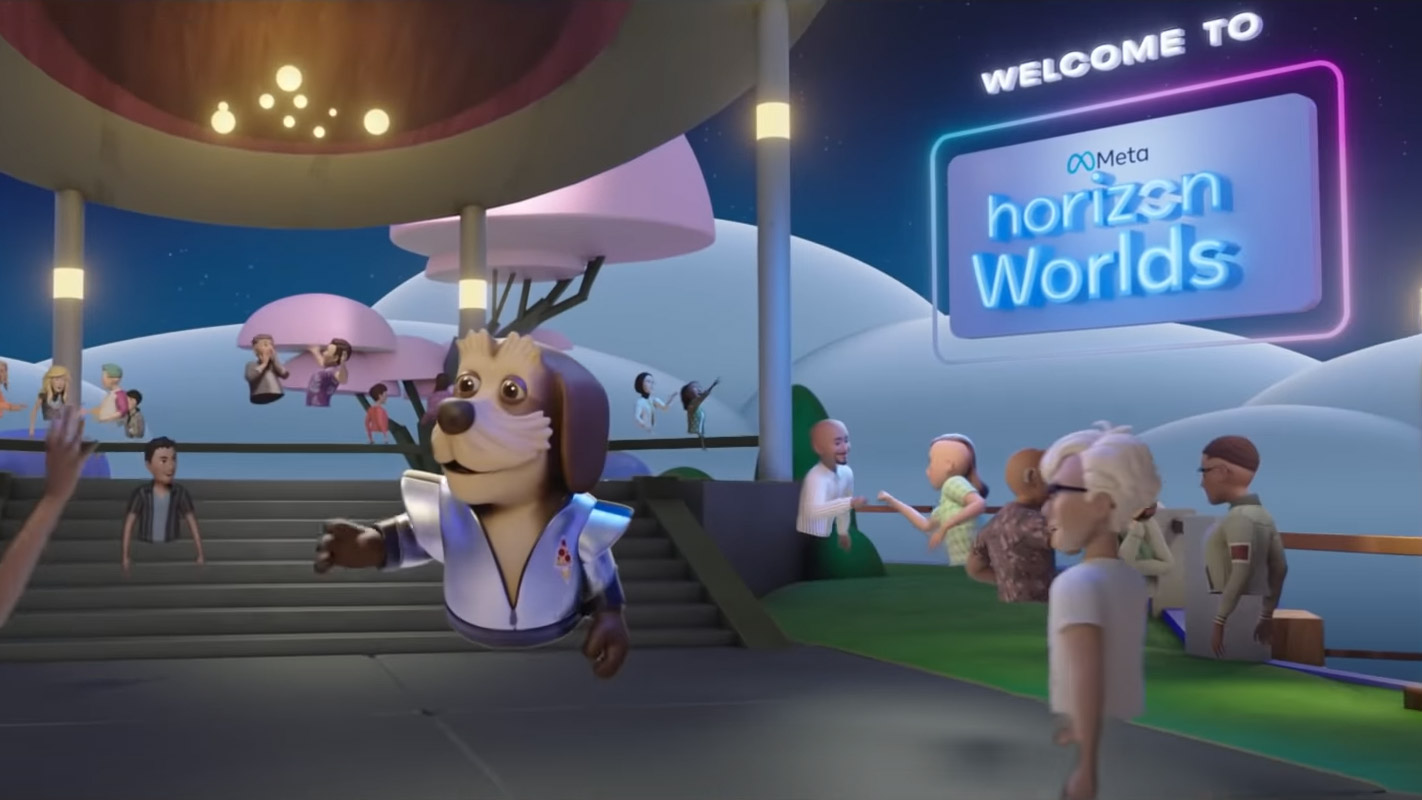
For marketers, this conversion creates new but complicated possibilities. In the future, it will not be enough to copy your posts from Instagram to Facebook and LinkedIn. People will want complete experiences and Stories: They will want to own your NFTs or cryptocurrency tokens, they want to interact with your community of token holders, they want to engage with your Twitch chat, play your mini-games on your website, interact with their peers in your Discord server and connect their wallets to your dApp. In this order. Well, or another one, but you get the idea.
If you have been following NFT communities over the past year, you have surely learned how different it feels to be engaged with a product, service, or brand of which you own a token, compared to a brand where you own nothing. You desire different things from such companies. You want more every day, and while some new brands have made an incredible job of delivering on even the most abstract promises, some brands have failed completely.
To help you on your journey into metaverse marketing, below are our best tips and observations to put you on the right path.
1. Experiential marketing 🔭
Experiential marketing is by no means a new term or phenomenon. On the contrary, it has been a vague definition for years. In short, it refers to strategies that were designed to engage consumers and encourage direct participation with products. But if you look closely today, you can see that something new is brewing slowly but surely.
People want to be actively involved, and they demand to be offered a real interactive experience.
Playing and games, in general, are one of the (or maybe the) best ways to get entertained, experience new content, and even learn.
Now that gaming has become part of everyone’s life, in whatever form, the way is paved for experiential marketing to flourish. In the future, our job as marketers or communication officers will no longer be to come up with fancy captions or nice designs but to create immersive cross-platform experiences and Stories.
And to make this clear, when we say experiences, we also mean games. You don’t necessarily have to develop full-fledged AAA games, but gamified communication and experiences will turn out to be the bare minimum. So let us introduce you to one concept that we have seen applied by almost every successful NFT project of the past months:
Scavenger Hunts
You might remember scavenger hunts from when you were a kid. Roaming the streets or forests to gather clues and items to find the secret treasure or reward. It turns out we are never too old to get hooked on this simple concept. We want to feel smart and solve riddles or puzzles.

Searching the area (or in our case the internet) for clues, teaming up with other participants, and finally being rewarded for it can be an amazing experience. Especially if these rewards are valuable assets with real-world utility.
The cryptocurrency and NFT space is currently filled with great storytellers that offer not only their NFTs but a whole new world of stories and experiences. And the followers show an absurd activity and a willingness to pay properly for this experience.
See you on the Otherside in April. Powered by @apecoin pic.twitter.com/1cnSk1CjXS
— Yuga Labs (@yugalabs) March 19, 2022
We can only advise you to keep an eye on the big NFT projects in the space right now. They do a lot right regarding communication and active community building. Everyone can learn something there. Is a lot of this due to hype and the fear of missing out? Of course. But that’s not all, we promise.
A great example and an amazing job in Storytelling is currently ongoing in the world of “10KTF” or also “Wagmi-San”.
My dear friend, Alessandro Michele, is in New Tokyo for a visit to the 10KTF Shop, and he comes bearing gifts from the #GucciVault! 🔮 Sip tea with us at https://t.co/fwp0vEtwcF and discover more. #10KTFGucciGrail https://t.co/WeBkrmtmEs @gucci pic.twitter.com/LjGWMhFJIB
— Wagmi-san (@10KTFshop) March 9, 2022
To show that also non-crypto brands have started adapting to this development, we picked a recent example of Perrier X Takashi Murakami.
At the end of 2020, Perrier hosted a digital scavenger hunt during the ComplexLand festival. It was part of the promotion for a new collaboration with the artist Murakami. Participants could win physical items (signed T-shirts, hoodies, etc.) through daily interactive scavenger hunts. Before the start, the participants were notified about the drops and then had to search the virtual land to find and unlock prizes.
This campaign shows that you don’t necessarily have to build your own game or metaverse to develop creative and engaging ideas. Instead, you might as well plan your experience on top of existing projects. This can save you valuable resources and open the doors for a whole new audience.
2. In-game marketing 🌌
Talking about virtual worlds that give your audience the chance to experience adventures all day long. Let’s talk games for a second.
You could argue that the basic idea of the new “Metaverse” Games is not that new. And you would be right. Games and 3D worlds have always been a mystical layer on top of the Internet. But now we see how this idea becomes more concrete and takes shape. Also, our tools to develop and experience these worlds have come a long way. Powerful game engines, viable VR headsets, and a booming Web3 industry can change everything.
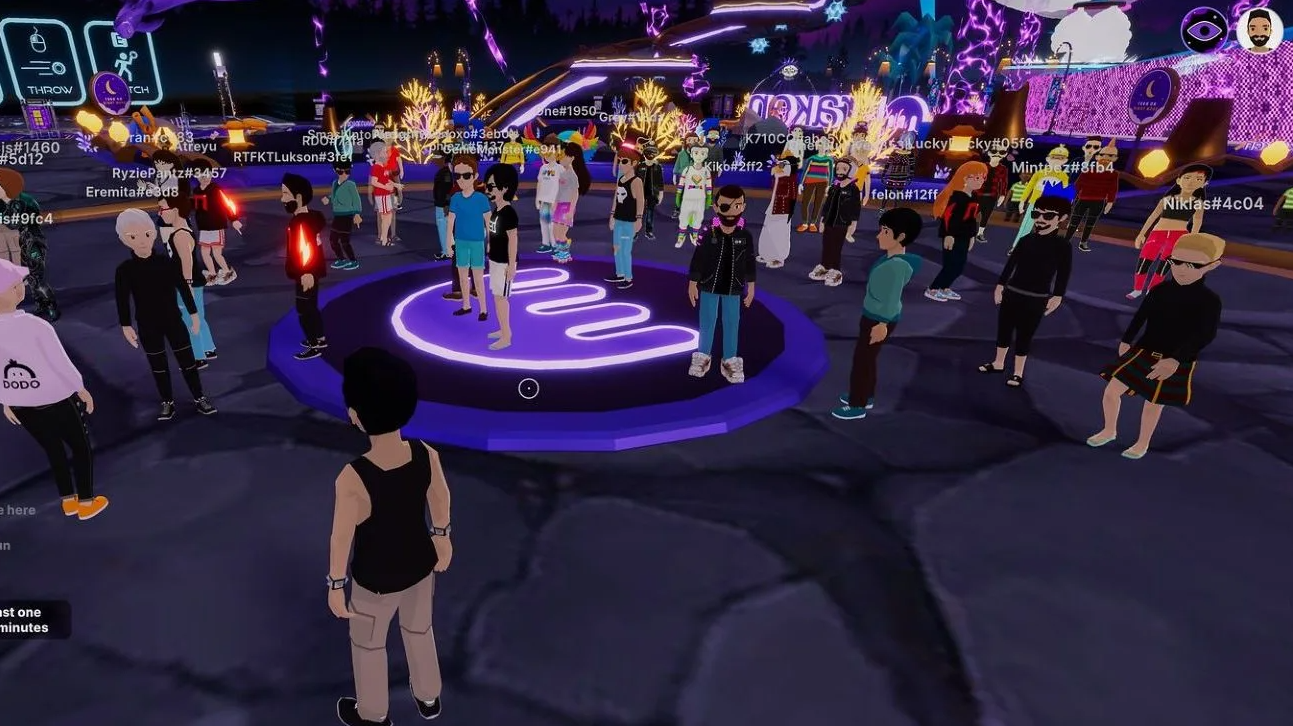
Gathering in Decentraland
But the Metaverse is more than one virtual world that connects people. It can be any interface. VR experiences, interactive online games, Social Media, or old-school web2 homepages that engage the user. In the end, METAVERSE means bringing all of this together and connecting these experiences.
2.1 Riding the trend wave 🏄
There are many ways to jump on the bandwagon and make use of this trend. Depending on your budget, you can create your own “Metaverse” game or simply create an experience in an existing one. Over the last couple of months, we have seen many established platforms and promising upcoming projects to create experiences for your users. Decentraland, Otherside, OM, Sandbox, … the list goes on and on. While many of these new projects are still trying to surf the “Metaverse”=”Blockchain-based game” trend wave, there are also some great new platforms being built, for example oncyber.io.
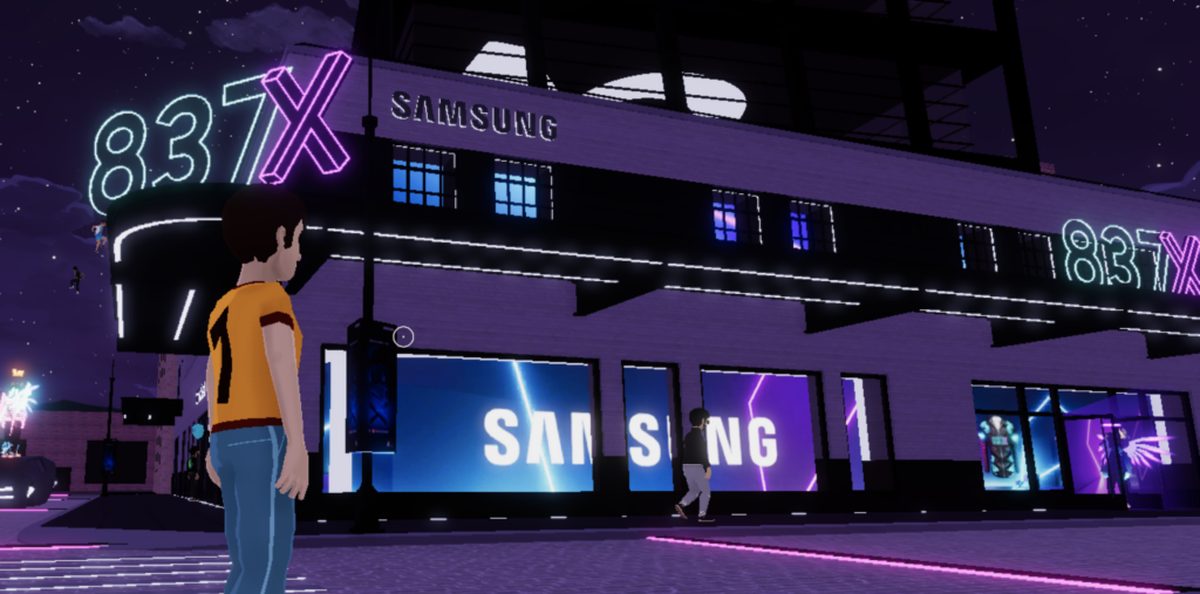
Samsung in Decentraland
Developing little games and interactive platforms is easier than ever today. Additionally, game engines have become immensely powerful over the last years. If these trends continue, you will have no excuse not to build your own games and experiences for your customers. They will demand this type of content from you, or they will straight-up ignore you and have fun interacting with one of your competitors.
2.2 Advertising on digital land 📽️
Buying digital land and advertising on it feels similar to stores in modern outlet malls. These advertising spots are not supposed to generate instant money but to raise awareness and help brands to stay in people’s minds. The huge advantage of virtual surroundings is that it is easy to gamify a rather dull shopping situation. We believe that sooner or later, every major company will be advertising in one of the many digital worlds. So you might as well want to be early.
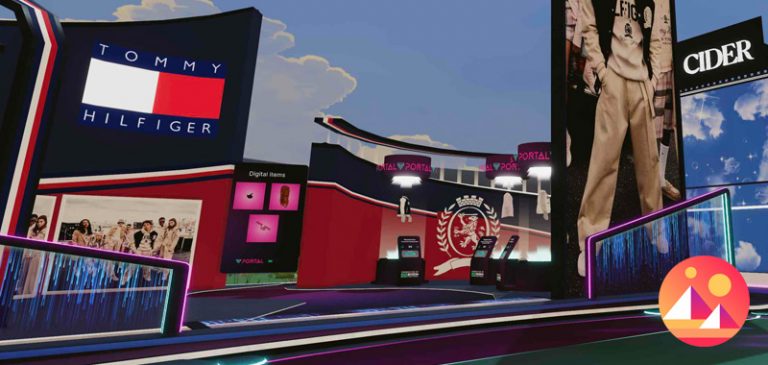
3. Technology will do our jobs🤖
The past years have shown incredible progress in AI.
Image generation technologies like Dall-E 2 or text generators like GPT-3 may help us and allow us to stop worrying about content creation completely. They will be so potent that all we have to do is put our creative ideas into words, and the AI will implement them for us. This may allow humans to focus on drafting the experiences, and the technology will take care of the realization – giving us more time to work on the details of the experience itself.
If you want to get a rather pessimistic take on what these developments could mean for the creative industry as a whole, check out this Thread by our CEO Misch Strotz.
Been thinking a lot about DALLE-2.
I’m not an expert in AI (tl;dr of my experience is basically cloning GIT repos of waifu generators), but I have tried to make up my mind around the implications.
Here are my thoughts.
— mitch0zᵍᵐ (@mitch0z) April 10, 2022
That being said, it might also soon be time to kick your Social Media experts and designers and hire some game developers or story writers… no no just kidding.

4. Chatbots
Yet another technology that will help us develop better experiences for our customers. And we see this development unfolding already as of today. Chatbots have become the standard in almost every industry to interact with customers and solve complex problems. AI has become so potent that it is often impossible to tell if you interact with a real person or a bot. Moreover, they take care of a big part of your workload, which gives you more time to concentrate on important tasks. We wrote a whole article about Chatbots not too long ago: have a look.

5. VR & AR 🕹️
Virtual Reality and Augmented Reality marketing gimmicks are often the first steps in a general direction of experience and gamified marketing. They allow us to add this interactive layer on top of the technology all of us already own right now. The first precursors of this can be found on platforms such as Snapchat, TikTok, and Instagram.
It is no coincidence that interactive filters are among the most fun features of Social Media in the last decade. They force you to be silly and engage with the content, thereby creating an active experience.

In one of our older articles, our CEO Misch Strotz went one step further and stated that “Augmented Real life” is one of the most significant technological changes to come, and we still believe that soon a big hardware change is upon us.
Conclusion
After all is said and done, one question remains. What can YOU do today to get ready for a new era of marketing and advertisement?
If it were up to us, the answer would be clear: Deal with those subjects and this new world ASAP!
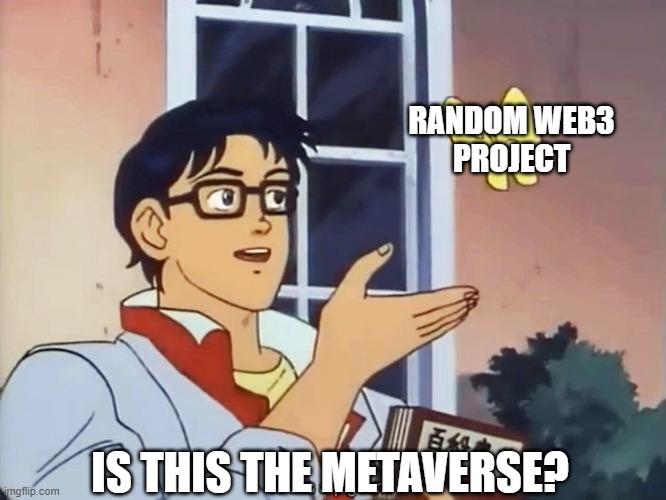
The developments in the gaming and Web3 spaces are getting faster day by day. They are the fastest-growing industries at the moment and this trend has only just begun.
Television broadcasts and newspapers are still relevant today. Social Media will still be relevant tomorrow. Nevertheless, it is important to actively deal with some topics:
1) Keep track of recent developments in the Web3 and NFT space.
2) Keep an eye out for opportunities to integrate yourself or your brand into interesting projects.
3) Work on your storytelling skills.
4) Focus on creating engaging experiences and content.
5) Start thinking cross-media.
If you want to start a career in Web3 or the Metaverse, we also recommend you to head over to this recent article that our COO Jacques wrote for Nexten.io: Working for the Metaverse
In this sense – see you in the Metaverse!
